Tabla, an inevitable instrument in Indian Music, is popularly used for keeping rhythm and in showing the ‘Tala ‘- a combination of a fixed number of total strokes, played in cycles to the singer.
Importance of Tabla
As an instrument of Indian heritage, Tabla – the most important percussion instrument has great importance in accompanying all the forms of Indian classical and semi classical music – vocals – Hindustani (North Indian) classical or other genres of music (Indian devotional, western classical or folk to fusion Music) and dance performances especially in North Indian dance Kathak. It can be played independently in the form of solo performances or as a rhythmic accompaniment to other types of instruments. Tabla has gained wide popularity and appreciation from the globe across because of its versatility in all musical styles and the level of sophistication and tonal beauty it possesses.
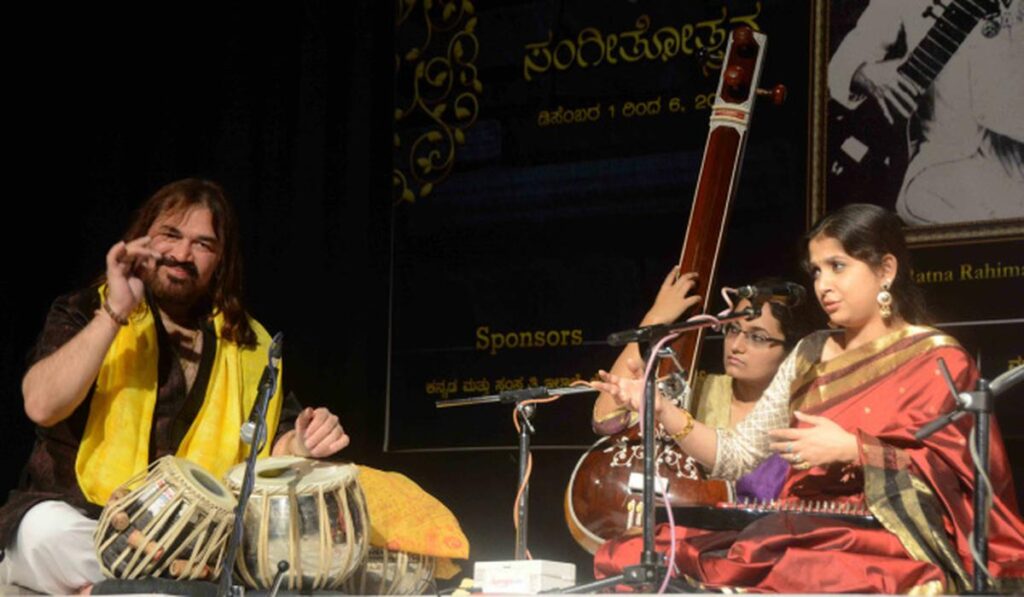

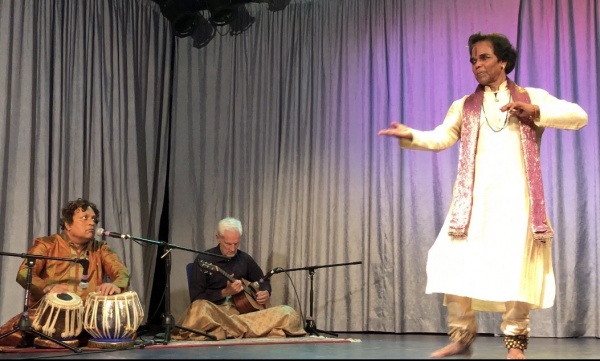
Origin & History
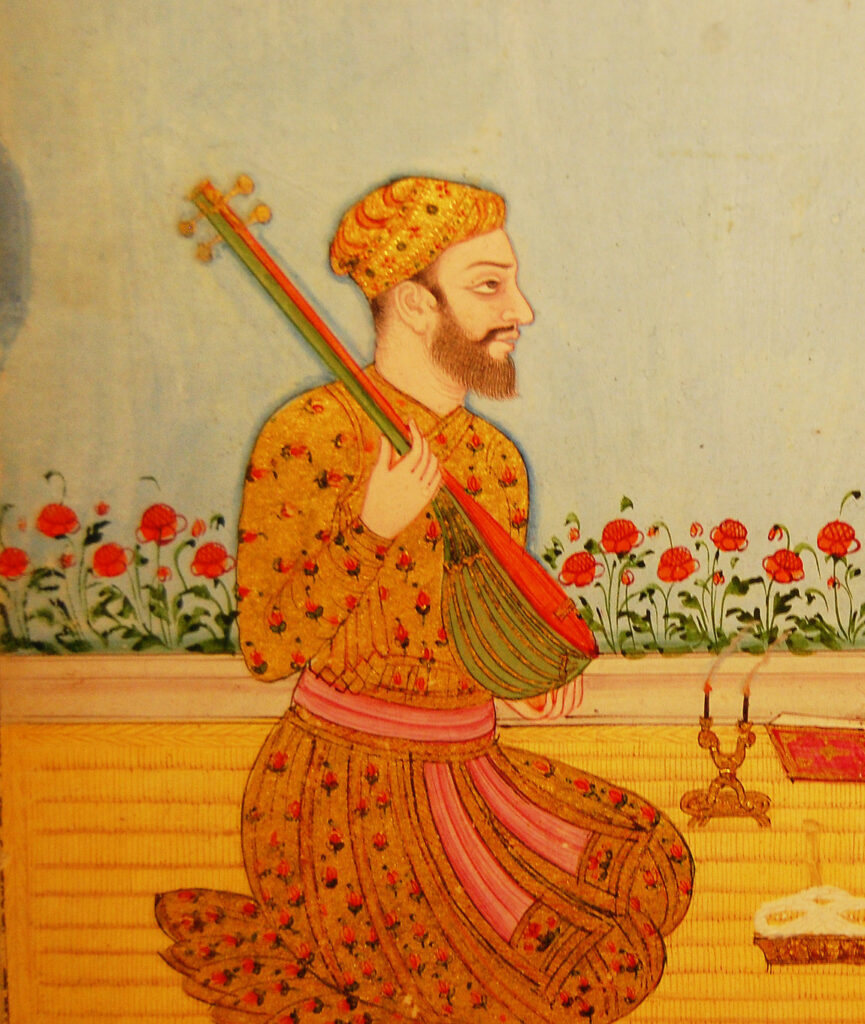
Drums and Talas are mentioned in the Vedic era texts.
There are many theories regarding the invention of the Tabla. Some scholars believe that it was discovered by the poet-musician Hazrat named Amir Khusru of Allauddin Khilji’s Durbar in the first half of the 18th century.
The other assumption is connected with the Indian mythology which told that Lord Ganesh once while playing the parental Indian instrument pakhavaj, accidentally dropped it and that’s how the partition gave us Tabla.
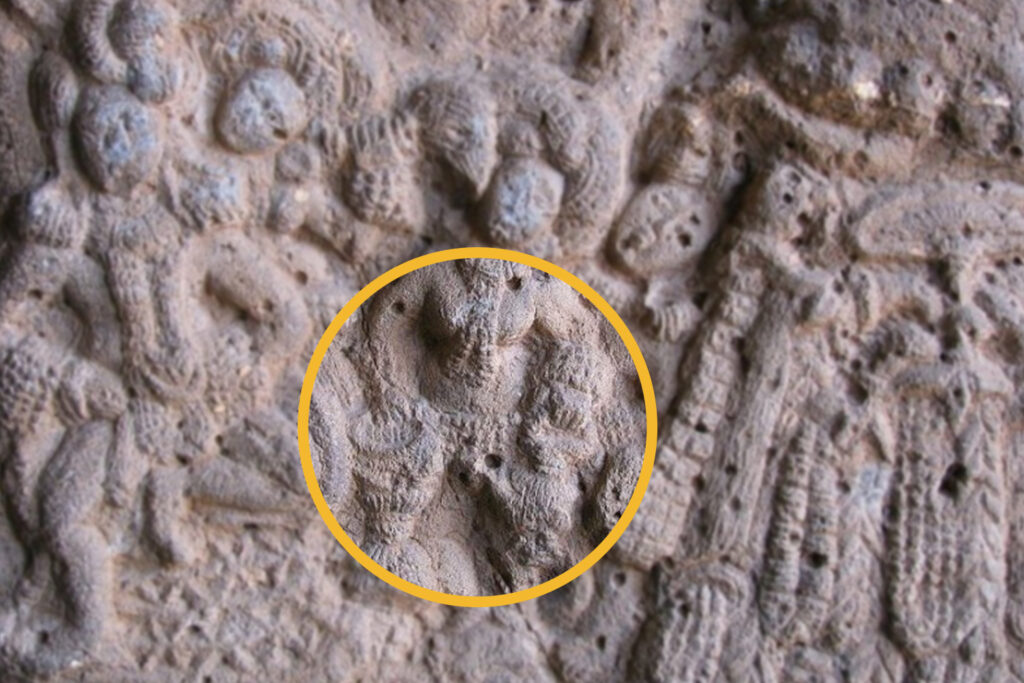
Tabla is derived from an Arabic word tabl, meaning an instrument facing upwards, with a flat surface or drum. The stone sculpture carvings in Bhaja Caves – a group of 18 caves built during the Mauryan times around 2nd century BC and located in Pune district in Maharashtra depict a woman playing a pair of drums, which some have claimed as evidence for the ancient origin of the tabla or similar instrument in India.
Construction
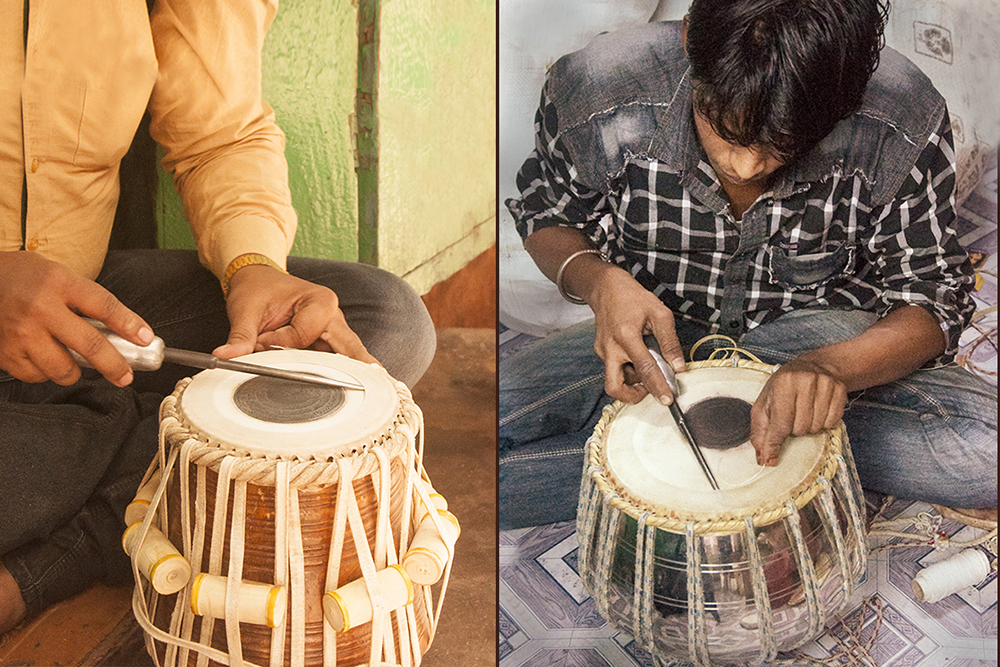
Tabla consists of a pair of single headed drums. The left-hand drum is called Bayan (or Duggi) and the right-hand drum is called Dayan (or Tabla). The right-hand drum is a conical (almost cylindrical) drum shell carved out of a solid piece of hard wood. The left-hand drum is a hemispherical bowl-shaped drum made of polished copper, brass, bronze, or clay. Both of them have an ‘open’ end – the playing surface – covered by a composite membrane – made of goatskin. The parchment called pudi or chhavani. There are basically three parts of the pudi.
Photo: Tabla Making, Varanasi; Credti: D’source
1) The weaving (gajara)
2) The membranes
3) The syahi (black spot).
Pudi is tied to a plaited strip called ‘gajra’ made of four or five leather braces. Gajra is fixed to the mouth of the drum by means of leather braces called ‘baddhi’, which is tied to another ring at the bottom of the instrument. There are sixteen holes or ‘ghar’ to which the braces are tied at equal distance. In the right drum there are eight tuning blocks or braces or ‘gatta’ which are moved up or down to vary the tension of the pudi. A narrow membrane on the outer periphery on top of the full membrane (sounding surface) is called Kinara or Chanti. The visible parchment face of the tablas is called the maidan (which means an ‘open space’) or Lav. The syahis perfect circle, in the middle of the pudi, is the tuning paste applied to the head of each drum. It is a semi-permanent paste made of coal dust, iron fillings, and rice paste. Syahi is placed centrally on the dahya and off-centre on the bahya.
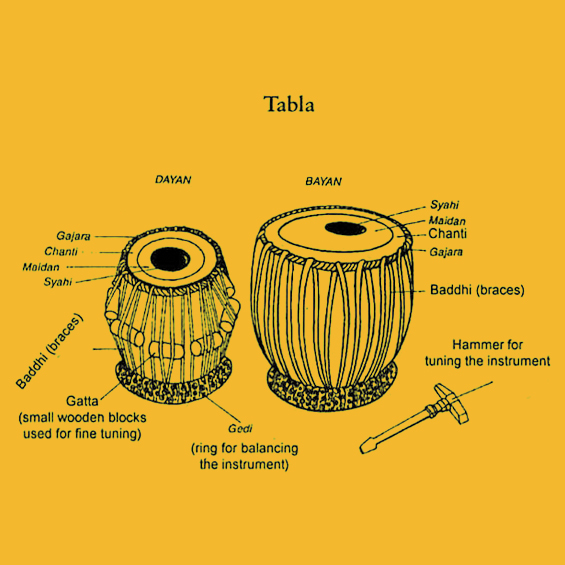
Playing Technique

Tabla has a complex playing technique. Tabla or Dayan is usually played with the right hand and the Bayan or Duggi is played with the left hand. The musician can achieve a wide variety of sounds by striking the drums in different ways, including sliding the hand across bahya. It involves extensive use of fingers and palms which produces a wide variety of different sounds and rhythms called mnemonic syllables – ‘bol’. It is played in two ways- band bol (tali) and khula bol (khali).
Science Behind the Sounds of the Tabla
The rigid outer shell in the tabla was found to be favourable to the sustained vibrations.
Physicist C V Raman’s principal interest was in understanding the science, particularly the physics behind the unique sounds of the mridangam as it precedes the tabla. He started exploring through a series of experiments in 1919. A small break in the musical journey was when he discovered the Raman Effect that brought home the coveted Nobel in 1930.
Raman found that the ‘syahi’ loading of the drumhead greatly increased the energy of vibration – the range of sounds that the musician can make on the tablas and affects the resonance and pitch of the drum. This leads to the sustained quality of the tone. The shell of the instrument also has a considerable amount of enclosed air, making the tabla instrument sophisticated and capable of sounding with harmonic overtones.
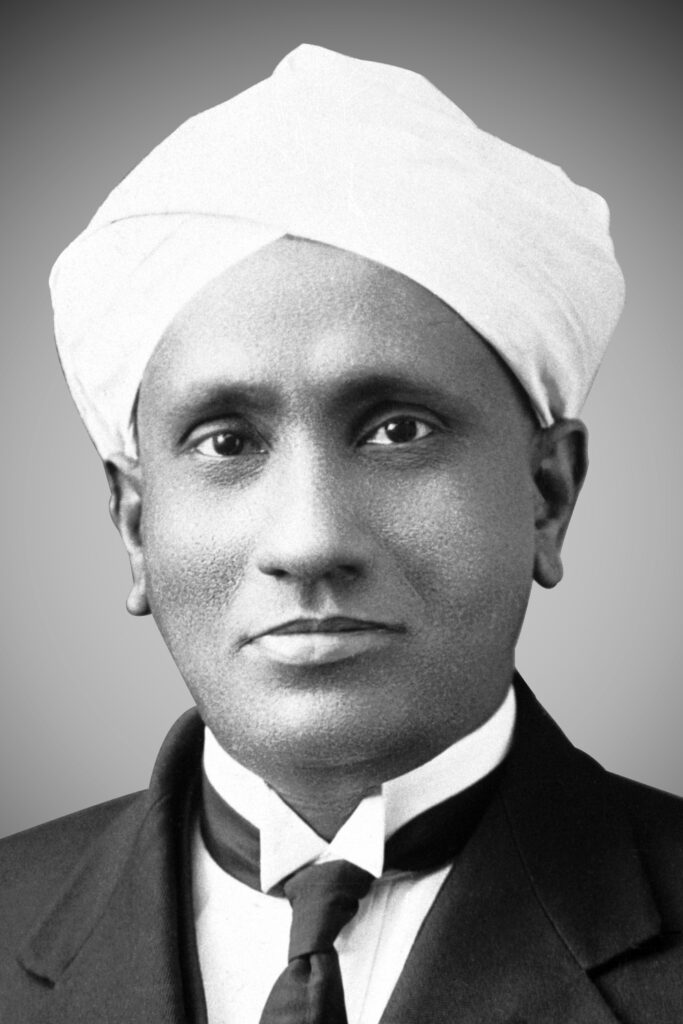
Raman concluded that inventors of the Indian drums realized the importance of equalizing the tensions wrought by the drumhead. So, the drumhead of Tabla was not made of a single piece of leather, but three layers of superposed skin and exactly sixteen tension equalizers were used to maintain the integrity of the structure.
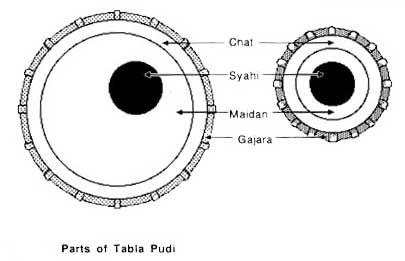
Raman concluded that inventors of the Indian drums realized the importance of equalizing the tensions wrought by the drumhead. So, the drumhead of Tabla was not made of a single piece of leather, but three layers of superposed skin and exactly sixteen tension equalizers were used to maintain the integrity of the structure.
Photo: Chanti or Chant, Maidan & Syahi part of Tabla Surface – Three Layers of Superposed Skin; Credit: India-instruments
Distinguished Players of the Tabla
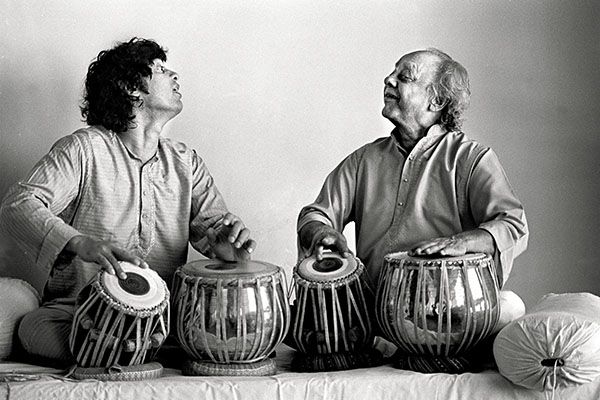
Tabla artists like Ustad Alla Rakha has contributed a lot in popularizing Indian drum Tabla. He toured Europe and the United States with Pandit Ravi Shanka, world re-renowned Sitarist, musician, composer and they performed together. The experiments done by Ustad Zakir Hussain, son of Ustad Alla Rakha, also made Tabla popular an important part of fusion music. Check out this following video of tabla presentation by Ustad Alla Rakha – Pandit Ravi Shankar Presents Alla Rakha.
Are you interested to gift a miniature version of tabla to a music lover/teacher/ enthusiastic? Check out our handmade miniature wooden table HERE – A perfect gift for musician!


